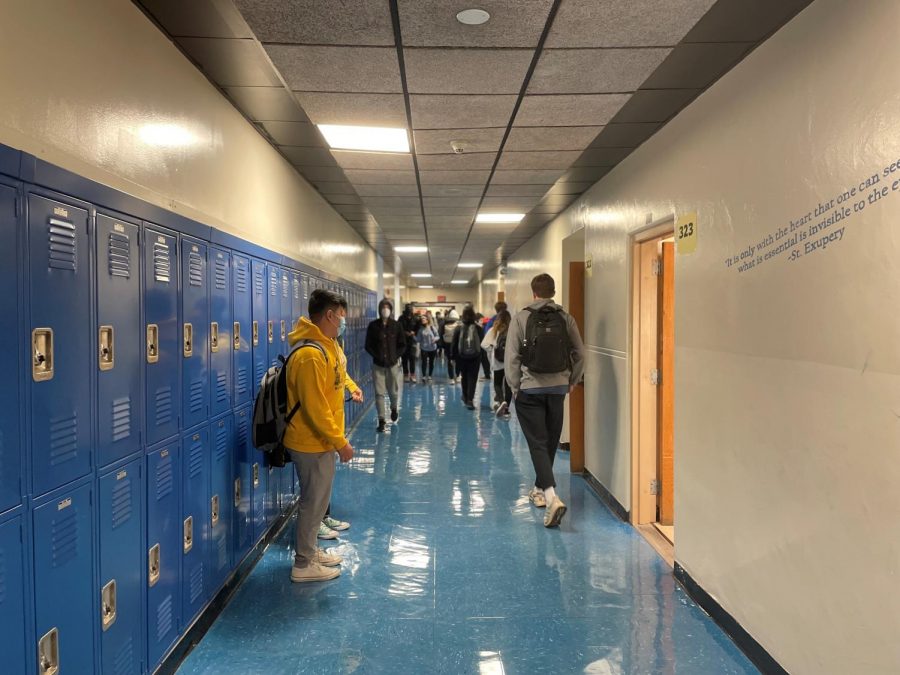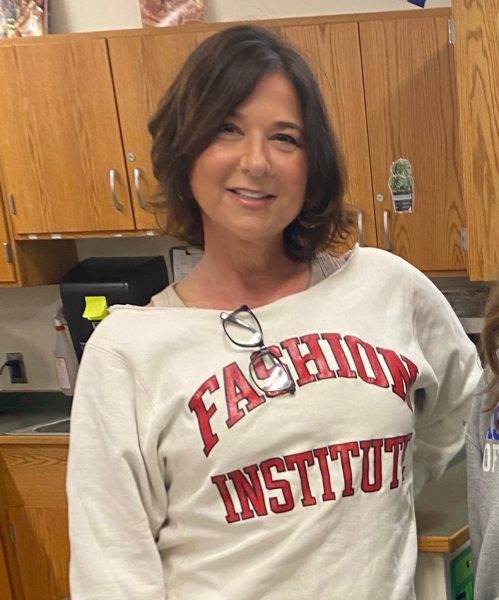Is Two-Way the Right Way?
Hallways return to two-way traffic for the 2021-2022 academic year.
During the 2020-2021 school year, the many LHS rules were modified in order to adjust to the coronavirus pandemic. One change meant the restriction of close contact, and one-way hallways were introduced. Now, as vaccination rates increase and guidelines become less restrictive, the hallways have returned to a two-way system. However, some Lynbrook students and families have questioned whether the switch back was a safe decision.
Last school year, social distancing and mask-wearing were implemented in classrooms, but minimizing the spread of COVID-19 proved more challenging in a confined, shared space like a hallway. Assistant Principal Salvatore Brescia explained, “We got the classrooms under control, we got the cafeteria under control, [and] we got the gym classes under control.” Instilling order in the hallways was one of the more uncommon safety protocols implemented by high schools across Long Island. Though challenging, the administration “did [its] best to figure out a way to minimize contact in the hallway, too,” Brescia added.
Prior to the pandemic, there was a general agreement among students that the hallways were packed between classes. “The hallways of LHS were extremely congested, even more so than now,” senior Lorelei Dillon recalled. A junior who wishes to remain anonymous also shared that there was “always a problem by the main staircase, especially after a lunch period.”
Despite this previous congestion, the implementation of one-way hallways last school year proved to be controversial among students. The junior claimed that the one-way hallways “absolutely did not” help the situation. “It not only made things more confusing, but it did nothing to protect us in terms of COVID because for every person we’d be avoiding contact with by only going one way, there were three others walking around the whole floor trying to find a way to get to their class,” they added.
Dillon, on the other hand, disagreed with that statement. “I think that the system created during the height of COVID was very helpful because it helped keep people far enough away from each other that you could feel at peace that you wouldn’t be in danger,” she said. Dillon added that the hallways were less packed, making her “feel much safer” because she “wasn’t around as many people all at once.”
Despite differing opinions on the helpfulness of the one-way hallways, Dillon and the junior share similar thoughts on the difficulties these changes presented. The junior felt that it was difficult to figure out how to get to class without going down the hall the wrong way. Dillon noted that “the most challenging part of the one-way hallways was probably just the frustration of not being able to go the route that would make it easiest to get to classes.”
Assistant Principal Matthew Sarosy explained, “There was not as much congestion in the halls because one-third of the building was either online or doing hybrid.” Due to this fact, Brescia was “not sure if [the one-way hallway system] was incredibly successful.”
Since the student body has only reconvened in recent weeks, it will be difficult to immediately gauge the safety of the switch back to the two-way hallway system any time soon. For now, there is general positivity surrounding the decision.
The junior, “without a doubt,” was eager to return to two-way hallways. “I personally prefer the original hallway system now,” Dillon agreed, “just because it’s easier to get to classes, and I still feel safe.”
As the frenzy of the beginning of the school year subsides, the focus right now is a return to normalcy. The removal of the one-way hallways seems to be helping students get to their classes much faster, and the building is quickly returning to many pre-pandemic operations.
“We said, ‘Let’s bring the kids back, and make this the most normal school year we can,’” Brescia said.

Hey there! My name’s Gianna, and I’m a member of the Class of 2025, along with many clubs here at LHS. In my spare time, you can find me on the stage,...

















